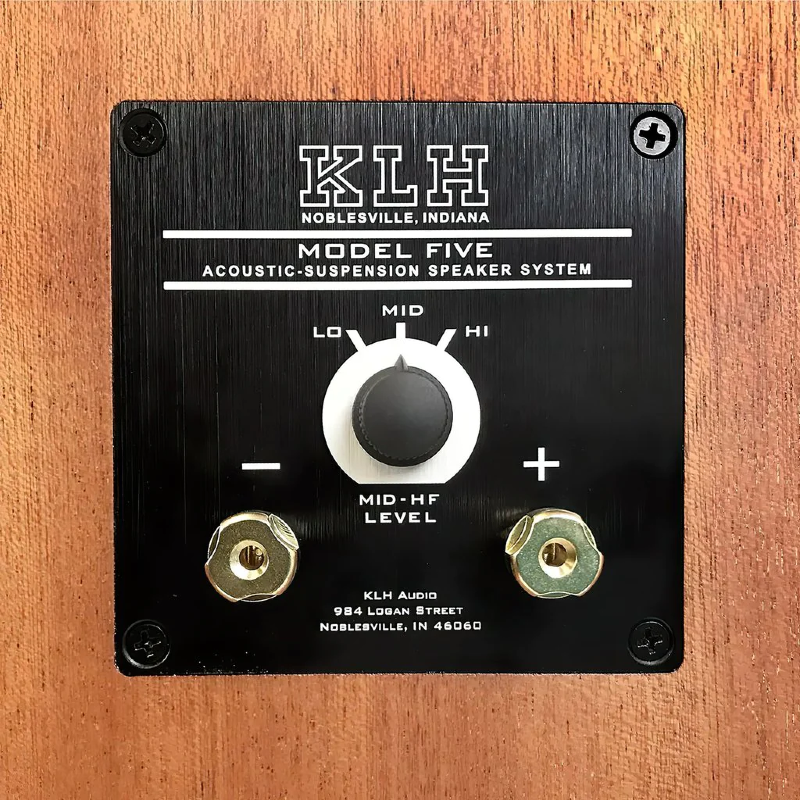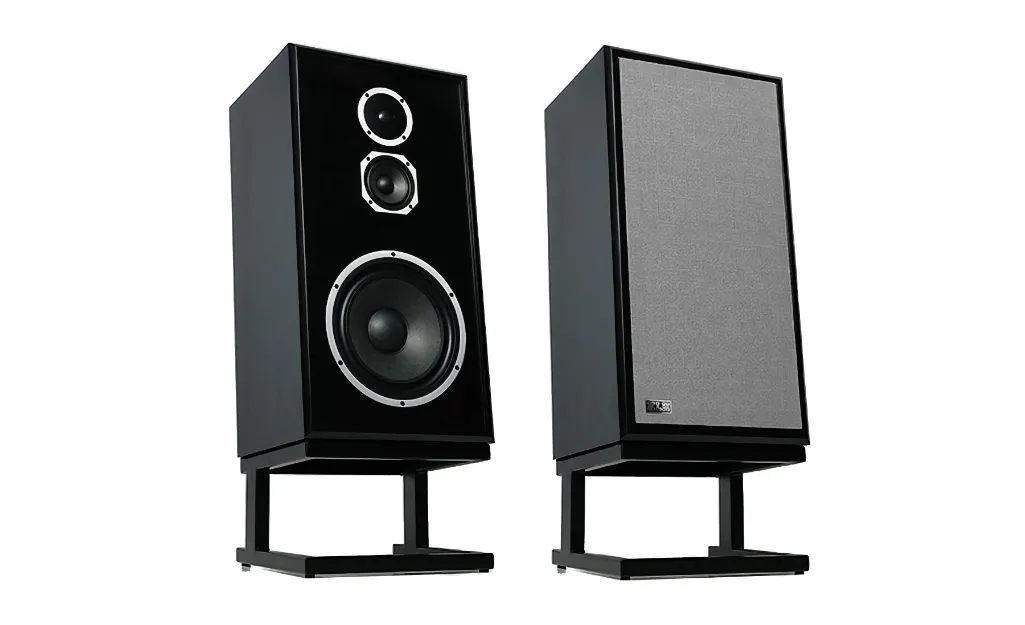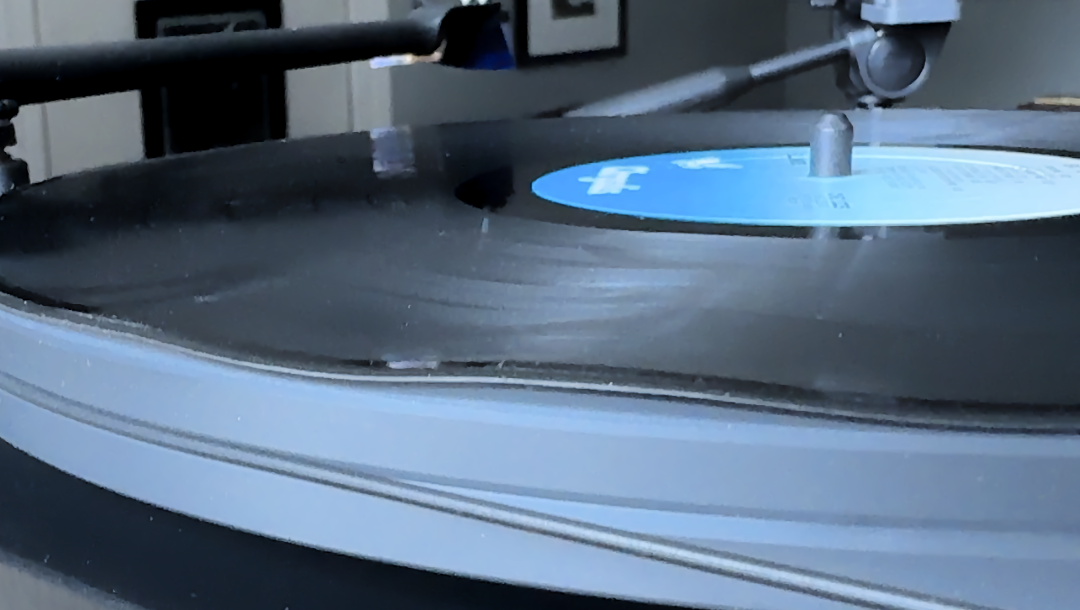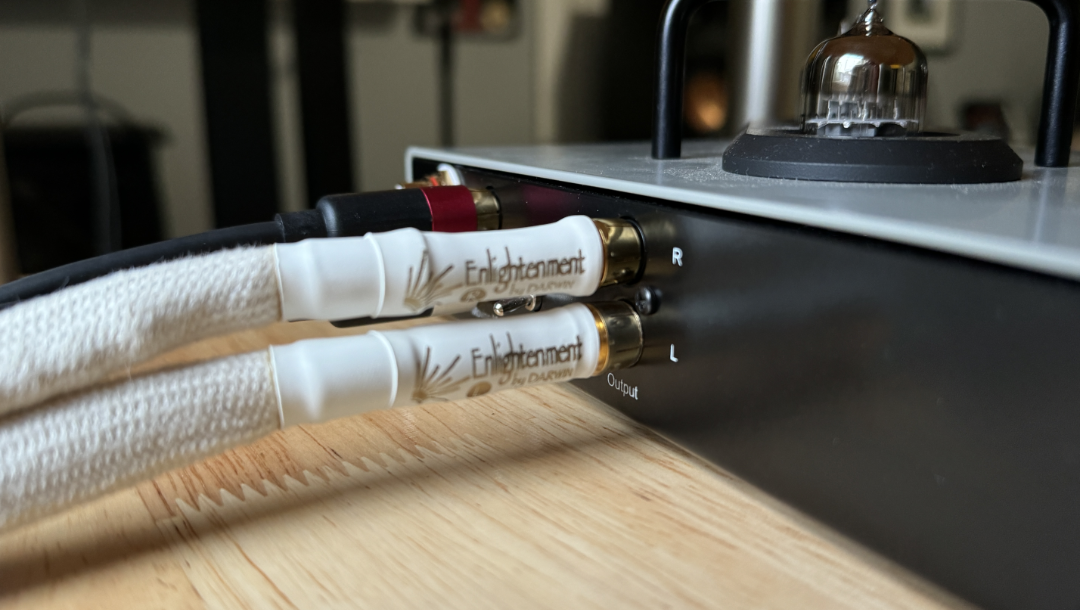It’s time for another review. This time, it’s the KLH Model 5 speaker. I’ve had them for a few weeks now and am well past the recommended eight hours of break-in. It took me a while to settle on the Model 5s. I’ve mentioned in the past that reviews lead me down a rabbit hole of dismay and indecision. This was no less the case before purchasing the Model 5s, especially since they aren’t inexpensive. I considered several brands – narrowed it down to two, sought advice, and settled on KLH.
Speaker reviews are funny sometimes. There are so many brands folks either love or hate and for many reasons, it will make your head spin. My Klipsch 600M IIs are a great example of this. I was happy with them. I knew I’d replace them someday, but I was content with them. Just not content enough. The thing with the Klipsch was finding the sweet spot to truly enjoy them. My vinyl room isn’t large and will tend to be reflective depending on where the speakers are directed. I had to pull them deep into the room on stands filled with sand and some toe-in to unlock what they could do. They also had a tendency to sound bright, but this had a lot to do with the record on the turntable.
When it came time for a change, I wanted something that fit my room. I also wanted floor-standing speakers with more bass presence. After considering a few options, I decided on the Model 5s. Aesthetically, they had the look I wanted. They reminded me of the speakers my dad had when I was young. I’m a sucker for retro or vintage equipment, and the Model 5s fit the bill.
Let’s start with some specs.
The Model 5s come in three different color options: west African Mahogany, English Walnut, or Nordic Noir. I opted for the Nordic Noir because that’s what my wife was drawn to. With aesthetics out of the way, what about the speakers themselves?
The Model 5s have an acoustic suspension design, which means the cabinet is a sealed box. There are no ports or vents in the back, which you’d find in bass reflex systems. With an acoustic suspension design, no air can get in or out. The air inside acts as a cushion for the woofer. When the cone moves in, the trapped air resists this motion. It pushes back. When it moves out, the pressure decreases, creating a vacuum that pulls the cone back. This resistance is supposed to allow the speaker to reproduce lower frequencies. They also require a bit more power.
That was my concern when reading the specs. Power. The amp I’d be driving these speakers with is my Galion TS120. I have my Galion set up as a Class A amplifier with an RMS power of 35 Watts per channel. Would that be enough to fully appreciate what the Model 5s bring to the table with sound reproduction? They have a high sensitivity rating of 90.5, which is great. I also don’t listen at very loud levels, given the size of my vinyl room. So maybe I would be fine? I reached out to Thomas Tan, the man behind the Galion, for his opinion. I mentioned it was between this and another speaker. He felt the Galion would be more than adequate to drive the Model 5s as long as I wasn’t hoping to achieve concert-level listening. Fair enough. I already know that would never be the case even if I had an amp with a power output of 200 watts.
With the concern of driving power eliminated, I pulled the trigger.
The Model 5s come with a riser base made of powder-coated 14 gauge steel. These stands angle the speakers upwards at a five-degree angle. They aren’t tall – maybe 34” when on the base. They are a sight to behold.
Beauty aside, what about the sound? The documentation says to allow for an 8-hour settling-in period. This makes complete sense, and I suspect it probably takes a bit longer. And, I have to admit, it was obvious at first. They were a bit bright out of the box.
One of the features I’d read about that drew me to the Model 5s is a feature that KLH used back in the late 60s. It’s a passive attenuation switch that allows you to adjust the balance of high-frequency output relative to the midrange and bass frequencies, depending on your personal taste and the acoustics of the listening room. Since my vinyl room is somewhat reflective, I set it at “Lo”. There are three settings. Lo, Mid, High. High is basically neutral—mid decreases by -1.5db and Low at -3 db.

Being an acoustic suspension design, I wasn’t as concerned with moving the speakers too far away from the wall; as I mentioned, there’s no rear port – So I have them at a comfortable 10” away from the wall, leaving ample room on the sides.
Honestly, they sounded brighter than I’d have liked out of the box, even with the attenuation set to “Lo”. As the hours passed, they slowly mellowed out. The brightness that was evidence out of the box softened. Was I getting used to it? No. This wasn’t over an extended period. Each time I sat down, it was with a fresh set of ears and a few hours between listening sessions. There was an audible difference.
The KLH has a 1” aluminum dome tweeter, a 4” paper pulp cone for the midrange, and a 10” paper pulp woofer. Over time, the woofer became more present, and the tweeter calmed down. The midrange seemed somewhat consistent regardless of the break-in or the attenuation settings. After trying them out, I left it on “Lo” and put the grille on. I felt the grill also helped with the treble attenuation.
I’ve read and heard that the Model 5s bring out the voice and character of the amplifiers they are paired with. I’m happy to say they have brought out the warmth of the Galion TS120. I was in love with my amp before, and that was with the Klipsch, which tend to dictate the sound with their cerametallic cones. The Model 5’s paper cones allow the Galion’s voice to enter the room in a way it didn’t before, giving me a whole new appreciation of what it could do. I’m not even at its recommended 300 hours before it reaches peak performance. The pleasure has been in hearing the Model 5s settle in. The Galion and the Model 5s are a wonderful pairing that will only sound better with time.
And did I say they look beautiful? I think I did. It reminds me of that vintage 70s sound I first fell in love with decades ago, which set the stage for my audiophile journey.
So, am I happy? Yes, I am. Do I want to change anything? Not at the moment, but you’ll be the second to know when I do. My wife will be the first.
Watch the Video
– READ NEXT –
Subscribe to The Joy of Vinyl Newsletter




